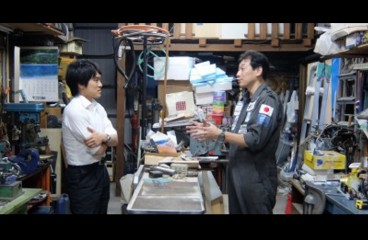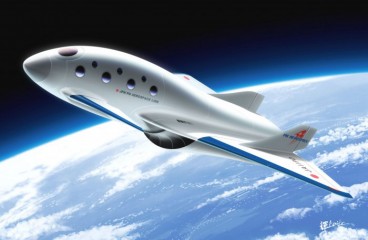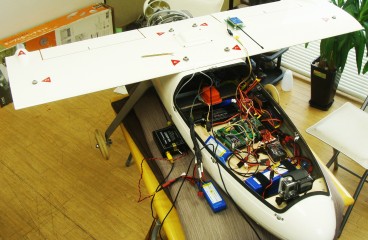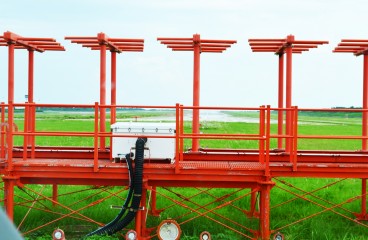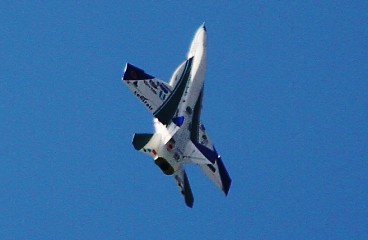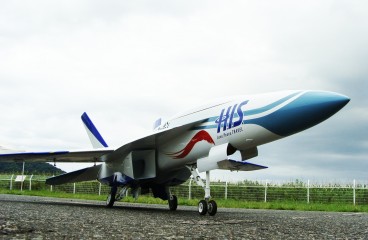Developing new Rocket Engine, Space Business
PD AeroSpace, LTD. View Company Info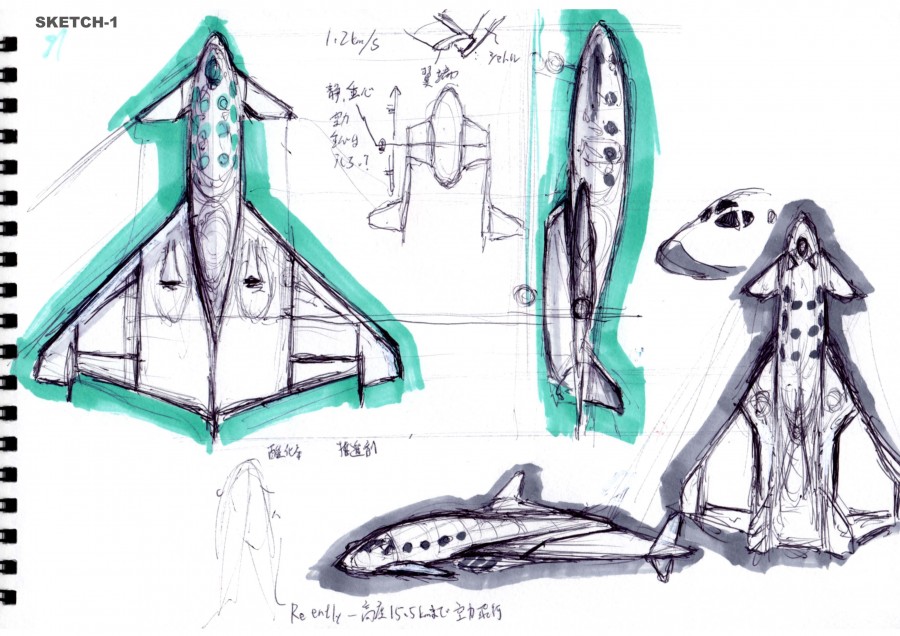
Low-cost and safe access to Space with an Engine that Switches between Jet and Rocket Modes!
There is a small Japanese start-up company attempting to develop a spacecraft with a few engineers in a small garage. PD Aerospace, Ltd. is aspiring to pioneer the space business with proprietary technology that combines “jet combustion” and “rocket combustion” into a single engine, which has been conventionally seen as incompatible.
A Venture Company Takes on the Space Business
Until recently, space had been the exclusive realm of state-led R&D. Now, however, we have reached a time when the private sector is starting to independently treat space as a business area. Spacecraft development and expansion into the space business at the private sector level, especially by venture companies, is progressing rapidly, mainly in the United States.
IT millionaires head most of those companies, and in many cases their development approach and design concept are quite different from the traditional model. Bold shifts in thinking, typical of start-up companies, are raising the possibility of making a giant leap forward in technology and business, not only in the fields of the Internet and IT but also in the space field.
Aircraft and spacecraft have traditionally had engines that use different forms of combustion, and so the two were treated separately until now. However, it is probably desirable to combine them, making use of the advantages of both, in order to reach and go back and forth to outer space more efficiently and safely. Everyone may think so, but no one has actually tried, based on the assumption that such a concept is just a theory and impossible.
They are attempting to develop just such reckless technology. They are not an IT millionaire and they do not have a development environment with a vast desert. They are a start-up with only two employees and a small garage. Focusing on the special characteristics of pulse combustion, they are working at the development of an “engine that switches combustion modes”. This is a single engine that switches between running in an air breathing mode (jet combustion) and a using-onboard-oxidizer mode (rocket combustion). Its wide operating velocities range from zero to Mach 5. Here is a report on where they stand in their attempt to make a breakthrough in the space field, while working with a severe lack of resources.
Pulse Detonation Engine
The “PD” in our company name PDAS refers to a “pulse detonation engine”.
What is necessary to go to space? Anyone can answer that easily. It’s a rocket. Why is it not possible to go to space without a rocket? Because, a jet engine which is commonly used in aircraft, compress and use air, and the farther away you go from the surface of the earth, the thinner the air gets until the engine no longer work. A rocket engine, on the other hand, is loaded with fuel and a lot of oxidizer to make the fuel burn. It can work even in space, which has no air, because it is propelled through the emission of combustion gas created when the fuel and oxidizer react.
I used the word “space” above, but just how far away do you have to go from the surface to reach space? While there is no clear definition, frequently outer space is conventionally referred to as altitudes above 100 km from the Earth, and so I will follow that convention in this article. For your reference, a passenger plane that we take nowadays flies at altitudes of about 10 km.
Well then, how can we reach space efficiently? Here, “reach space” does not mean an around-earth flight (orbital flight) where a craft stays in outer space like a satellite or the ISS; it refers to a “suborbital flight” in which a craft reaches space (i.e. altitudes of at least 100 km) even for just a moment. To reach space in a suborbital flight, we will take the method of accelerating to a speed of around Mach 3 by an altitude of roughly 50 km, after which the engine is stopped and the craft climbs through the motion of inertia (decelerating to a speed of zero at an altitude of 100 km).
In other words, in order to reach space efficiently, the key is how to accelerate efficiently to a height of 50 km. One answer is to make use of atmosphere (i.e. air). Atmospheric air surrounds the craft to an altitude of 15 km—that is, 30% through the acceleration phase. That is to say, it makes sense to use a jet engine where there is air and a rocket engine after the air runs out.
There is a manufacturer that has actually done this and gotten to the verge of achieving a manned space travel. This manufacturer applies the following approach: Fly a jet carrying a spaceship loaded with a rocket engine; detach the spaceship when the air becomes thin at an altitude of around 15 km; from there, accelerate the spaceship to an altitude of 50 km by using the rocket engine; and then reach an altitude of 100 km through inertia. Admittedly, this may be said to be a rational approach.
That has been a lengthy lead-in, and now I will get to pulse detonation engine (PDE) here. “Pulse” means intermittent pulsation, like the beating in an artery, and “detonation” signifies a form of combustion. Detonation refers to a state where the speed at which combustion (flame) propagates exceeds the speed of sound, generating a shock wave in front of the combustion wave. Since the shock wave itself has a compressive and heating effect, it instantaneously elevates the temperature and pressure of unburned gas, combusting it and also accelerating the rate of propagation. As a result, a PDE is an engine that can operate even at hypersonic speeds of Mach 5 and above. (This is the first advantage as a spacecraft engine.)
Another characteristic of a PDE is that mechanical compression is not necessary (i.e. compressors are not needed), because it makes use of the compression effect of the shock wave, and so the engine can be configured into a simple tube structure. (This is the second advantage as a spacecraft engine.) A standard car engine uses pistons to compress air. A jet engine, on the other hand, uses numerous blades (turbines) to compress air. These methods of mechanical compression have the drawback of increasing the weight on top of making the mechanism more complex.
The principle of operation of a PDE is also extremely simple: You simply inject fuel and an oxidizer into a tube, mix them, and ignite. The fuel and oxidizer used can be anything, as long as it is a mixture that causes detonation. Since there is no mechanical compression mechanism inside the engine, there is no concern that it will break due to the shock of detonation. (This is the third advantage as a spacecraft engine.)
I am trying to apply these advantages to a spacecraft engine.
The conclusion is that the combustion mode-switching PDE that I develop will be a single engine that functions both as a jet engine where there is air and as a rocket engine where there is no air. In an environment where there is air—from the surface (i.e. on the runway) to an altitude of 15 km—the engine will run in the jet combustion mode, bringing the surrounding air in through intakes to trigger detonation.
In an environment where the air has become thin above an altitude of 15 km, the engine will run in the rocket combustion mode; the air intakes will close, and from there an oxidizer carried onboard will be fed into the same combustion chamber, triggering detonation. In so doing, it will be possible to continuously cover a wide range of altitudes and a wide range of flight speeds with single engine. As a matter of fact, PDAS has been issued a patent for the very technology that switches the same engine between the air breathing stage and the onboard oxidizer feeding stage. It is an amazing thing.
Thanks to this unique engine, there will be no need to fly two crafts together—a mother ship (i.e. a jet) carrying a spaceship equipped with a rocket engine. Nor will there be any need to bring a jet engine that will not be used all the way to space on a business jet equipped with a rocket engine. It will be possible to fly to space directly in a craft that seems like an ordinary plane. Since a PDE is a simple structure to start with, if we can get down to one airframe, we could get by with only one pilot and only one type of maintenance staff, maintenance equipment, and spare parts.
It is clear that it will be simple in every way. And that means that it will be possible to reduce costs right away. What is more, during coming back from space, the craft will be able to fly like a plane by switching back to the jet combustion mode. It will be able to assume a holding pattern in the skies and will only need a short runway. In other words, it will be far safer than spaceships that glide down at high speed and will be usable in many more locations.
Course of Development
A look back at the course of development would take us all the way back to my boyhood days. From the time I was in elementary school, I grew up looking at the pulse jet engine my father was developing as a hobby. Due partly to this influence, I took a job in a major aircraft manufacturer. After developing fighter planes, I moved to Tohoku University where I gained experience in developing scramjets. Then, in 2007, I launched all alone a space development company focused on this engine.
As it is a venture with limited means, I do not have superb facilities of a major manufacturer. Using the manual machine tools, well-worn hand tools and handmade equipment that can perform many kinds of processing, I have groped along in my research. In this laboratory, I also have an explosion-proof chamber for combustion experiments. Of course it too is handmade. Although I do not use explosives, the PD engine itself detonates repeatedly. The detonations make loud noises. When conducting experiments, I remotely operate a solenoid valve from outside the chamber. Just in case the solenoid valve should happen to break down, I hold on to a lever that can be used for a manual cutoff.
The feeling I get when putting flame into an engine that I designed myself is one that engineers at a big manufacturer, who in recent years have worked in highly subdivided sections, are hardly likely to experience. Although there are hardships, therein lies the attraction of pursuing this project on my own.
Outline of the Last Issue
In the last issue, we visited PD AeroSpace, LTD. (PDAS) where a small group of people in a small garage is developing an innovative engines which can access a distance of 100km above ground in outer space easy and efficiently. They told us about their engine technology and their past history.
In this issue, they talked to me about the commercial space industry and how they are planning to expand their business in the future.
The Business Potential of Space
Until recently, space development was largely helmed by the powers of the state for scientific/technological advancements and military purposes. In the US-Soviet Cold War era, fierce space race took place leading the United States to send a man to the moon through the Apollo program in 1969. Even after the Cold War, space development projects were still mainly state-led and large-scale, such as telecommunication, GPS and observation satellite projects. However, private enterprises have increasingly become active in recent years within the commercial space industry.
Space-related businesses can be classified into 2 types: Companies that deal with transportation of satellites, and companies that provide various information from space via satellites. A company that transports satellites into space would need a rocket corresponding to the size and weight of payload and destination (a predetermined orbit), and a company that deals with information would need an appropriate satellite to do business.
In the space transportation industry, Elon Musk, the founder of online financial service PayPal, started a rocket company named Space X based on his enormous assets and began a cargo shipment service for the International Space Station (ISS). Richard Branson, the head of Virgin Atlantic Airways’ Virgin Group, established a space travel agency called Virgin Galactic. They are going to be launching a sub-orbital flight into space 100km above ground, and are now taking applications from potential tourists.
In the satellite industry, there have been new companies that operate several to dozens, sometimes even hundreds of microsatellites (less than 100kg or 1 square meters), instead of huge satellites that weigh several tons. Skybox Imaging (acquired by Google for $500 million in June 2014) provides “satellite videos” which can capture motion on the ground in an instant.
In Japan, Axelspace Corporation, a startup company by Tokyo University, was commissioned by WEATHERNEWS INC. to create a microsatellite for observing the Arctic route, which they’ve launched into orbit in November 2013. It was the first commercial satellite made by a private company. My company, YUKI precision, had the privilege to be involved in the project as the manufacturer of the body frame.
These kinds of new space-related private companies that use rockets and satellites are quickly sprouting up. The most important thing is cost and convenience, the same as any other businesses. PDAS is trying to achieve that by developing a fully reusable sub-orbital spacecraft using their combustion mode switching Pulse Detonation Engine (PDE), which I introduced in the last issue.
Space Travel Is Only Half of Their Mission
Since PDEs are simple in its structure, manufacturing and maintenance cost can be reduced. At the same time, the simplicity allows for a higher reliability. Also, by giving the engine both jet and rocket functions, it becomes a simple space plane, able to cover a wide range of speed and altitude. Currently, they are mainly developing the engine and body for a sub-orbital spaceflight with an altitude of 100km, but their ultimate aim lies farther beyond.
What they are planning to do is to load a small rocket in the space plane instead of people, and launch the rocket at the altitude of 100km. The sub-orbital space plane then becomes a reusable fly-back booster. Since a rocket that used to be disposed after a single use can be reused, they are able to cut the cost of manufacturing rockets and or launching satellites significantly.
Furthermore, since their spacecraft is in the form of a plane, not a vertical launch rocket, restrictions from meteorological conditions and peripheral environmental conditions can be mitigated at launch. Plus, the satellite can enter the orbit at different inclinations, which increases convenience. If we are able to carry massive payload into orbits at lower cost, building large-scale constructions in space, such as a space solar power plant, might actually be a realistic future. The ideal way to put this engine to use would be to get rid of air-launching, and make it into a reusable SSTO (Single Stage To Orbit) system, which means that only one system would be needed to take a satellite into orbit. That is the kind of innovation I’d like to see from their technology.
Problems Remain Unsolved
Although this method of reaching 100km above ground with only one engine might seem like a success, especially since they were able to get a patent for it, there are still issues to be resolved in the development aspect. Currently, they have successfully detonated the rocket mode with pure oxygen gas, but detonation of the jet mode using atmospheric air has not been successful as of yet.
Plus, the combustion mode-switching mechanism, which is the most important technological aspect, is still under development. Even if their mode-switching experiment becomes a success, they would still need to tackle problems after another, such as raising frequency, reaching prolonged stability, and weight saving for when loading onto the space plane.
Their project faces a long list of shortages, including manpower, funding and the proper environment for experiments. People say that startups don’t get the chance to grow as much as they should in Japan. I’m sure funding is part of it, but I also believe that there aren’t many people with the courage to take risks in Japan. Maybe it is part of the characteristics of the Japanese.
Despite such a situation, Mr. Ogawa talks the future cheerfully. While he has been taking on development all by himself until recently, a new engineer, a young man with an experience working for a leading aircraft manufacturer, joined the project last year. Outside the team, there are volunteers who contribute. There are also small/medium-sized to large companies that support the project financially. “If you’re lacking something,” he says. “Then it’s up to you to find another way to do it. You can’t accomplish anything by coming up with excuses.”
He and I stood in front of the key mechanism of the engine, the combustion mode-switching system, discussing. “Maybe it’ll be easier to make if the structure was like this?” “Is it stiff enough?” “Is the flow enough?” “Can we patent this idea?” A discussion like this can go on through the night. Maybe I’m guilty of this too, but He looks the happiest when he’s talking about his engineering ideas. It would save us a lot of trouble if all these engineering innovations materialized from us just talking. The most important question to ask is “what is the most effective way to do it with the limited resources available?” Whether it’s business in space or here on Earth, There is no difference.
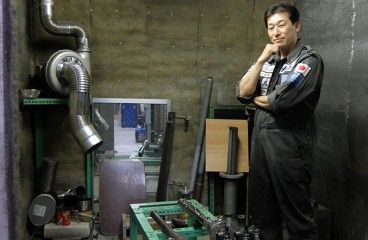
PD AeroSpace, LTD.
Business Description: Developing new Rocket Engine, Space Business
CEO&CTO: Shuji Ogawa
Headquarters Address: 3519 Arimastsu Midori-ku, Nagoya-city, Aichi 458-0924 japan
EStablished:2007


